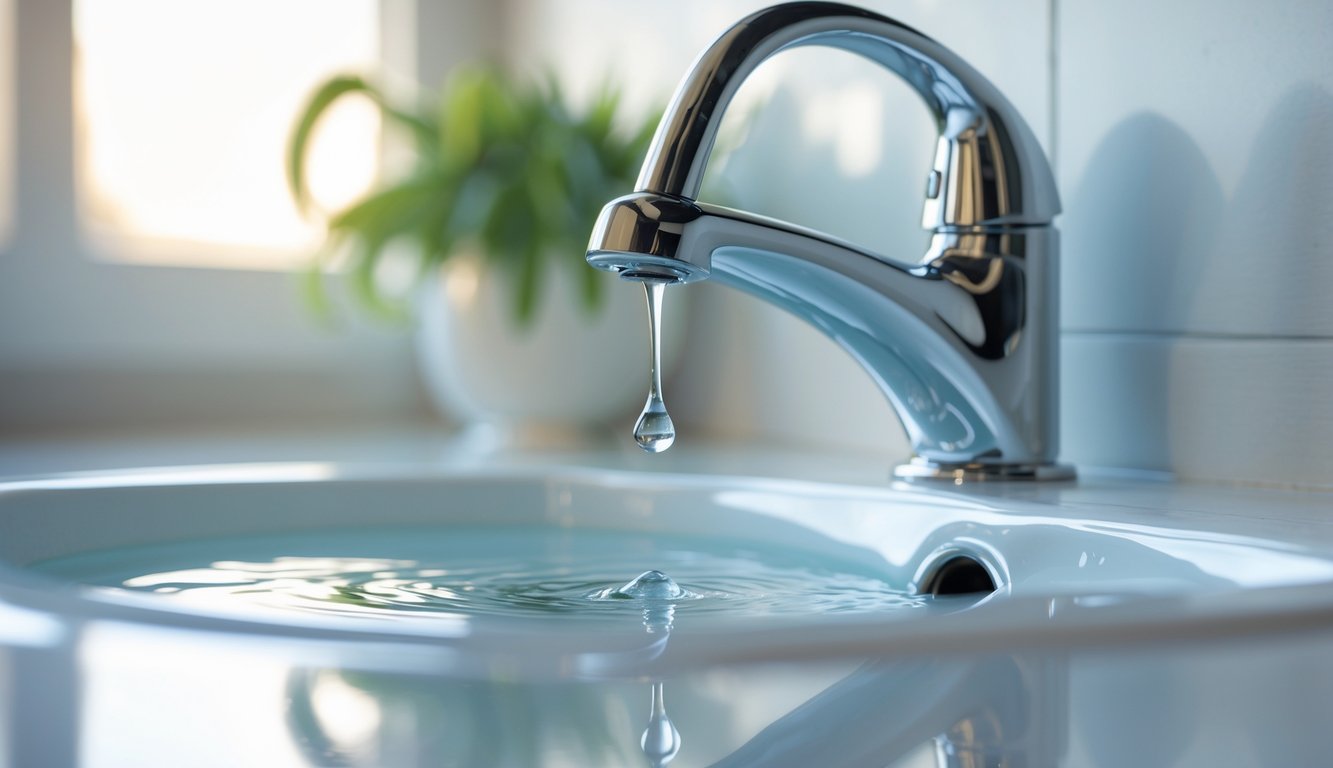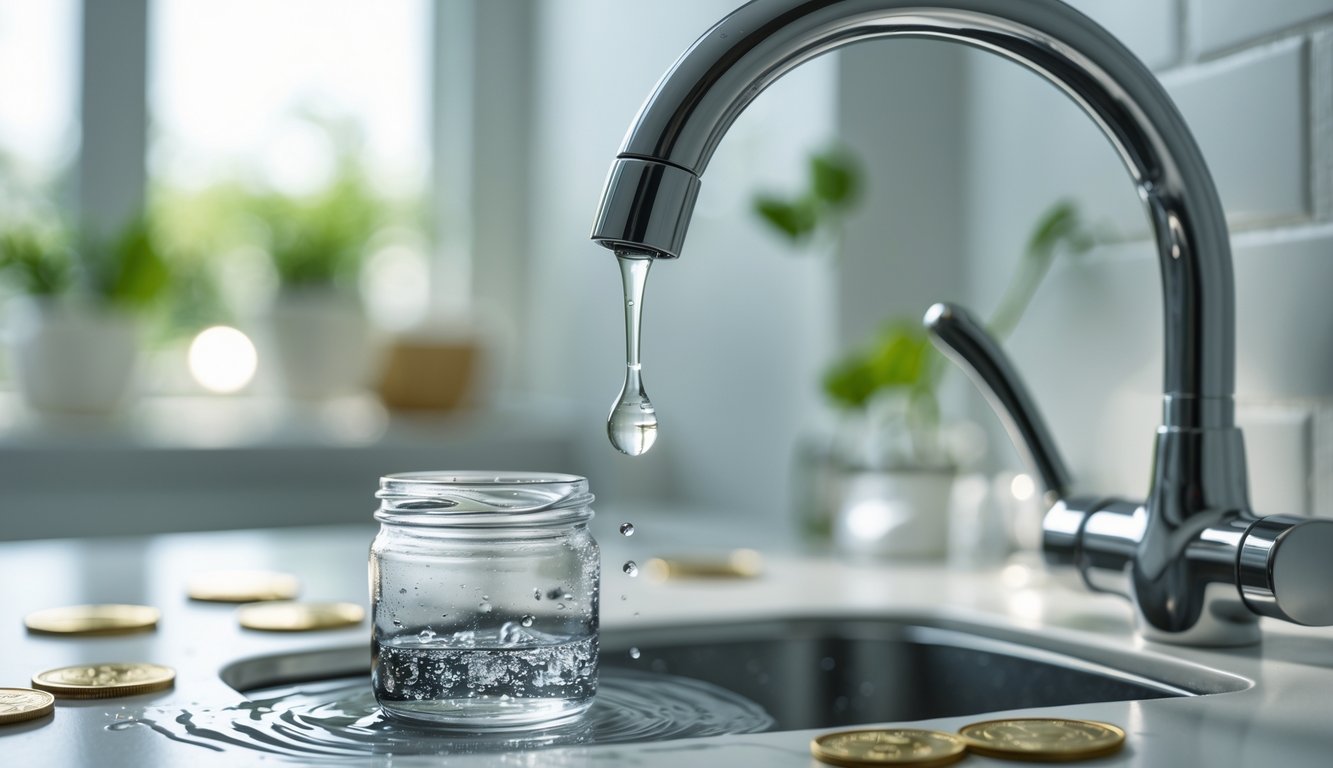
You ever try sleeping with a faucet dripping? Drives me nuts. I used to shrug it off—just background noise, right? Then I saw this EPA stat: one lousy leaky faucet can dump 3,000 gallons a year. Three thousand. That’s like, what, 180 showers? Plumbers aren’t exaggerating; these things are silent little thieves. I had one tell me, “You’re flushing money and clean water every day.” Thought he was being dramatic until my bill doubled for no reason.
Ignoring a drip is easy—just tune it out, right? Except, surprise, it’s not just the sound. Water sneaks behind stuff you never look at, and suddenly there’s a weird smell or your cabinet’s swelling up like bread dough. The plumber’s right: mold, mildew, and water stains show up before you even realize what happened. The EPA claims 10% of homes lose at least 90 gallons a day to leaks. Ninety. A day. Why doesn’t anyone warn you about this? Or how a cheap washer can turn into a full-blown headache?
I found black gunk behind my cereal boxes once—mildew. Looked like someone spilled ink. And for some reason, everyone just lives with the drip, like it’s part of the house. Wild. You’re basically paying for water that goes nowhere, and that’s not even counting what it’ll cost later to fix the mess.
How Leaky Faucets Cause Water Waste
Honestly, I’ve stared at a dripping faucet at 2 a.m., convinced it’s harmless. Spoiler: it’s not. Most of us are terrible at estimating how fast those drops add up. It’s like, “Eh, it’s just a drip, how bad can it be?” But then you realize all those drops are wrecking your wallet and, apparently, the planet. I mean, isn’t it weird how nobody connects a little leak to actual water shortages? But it’s real, and way more boring than kitchen renos, but probably more important.
Understanding Dripping Faucets
My neighbor’s obsessed with those “plumber’s washers” from the hardware store. Honestly, sometimes they work, sometimes not. Usually, it’s a $0.75 washer that’s been squished flat for years, or some o-ring that’s glued itself in place. No fancy gadgets needed—just a drip that won’t quit. I get texts about janky old fixtures or handles that wiggle like baby teeth. And don’t get me started on DIY installs after a single YouTube video. Disaster.
Sometimes, the water pressure’s nuts—like, is my shower trying to peel my skin off? I swapped out a faucet in a house barely six years old, and it was already corroded from whatever the city puts in the water. So it’s not just old stuff—new stuff leaks too. These leaks sneak in, and suddenly you’ve got a mess.
Daily Water Loss From Leaks
I did the math once, just to prove a point: one drip per second = 3,000+ gallons a year. Not exaggerating. I filled a five-gallon bucket in two days from one “minor” leak. Multiply that by a few sinks, and you’re losing a bathtub’s worth every couple weeks. And if you rent? Forget it—tenants never notice unless it keeps them up at night.
I’ve literally timed leaks with a cup and a stopwatch. Sometimes it’s a cup an hour, sometimes a gallon a day. You don’t see gallons disappear, just a few cents here and there, until the bill jumps and you’re like, “Wait, what?” It’s the slow, relentless leaks that get you.
Wasted Water and Environmental Impact
Does anyone care about water shortages? Seems like nobody does until the city says “boil your water.” Water companies call me every spring asking about leaks, because apparently, cities lose tens of thousands of gallons a year per home just from drips. It’s exhausting, honestly. And the water plants are already maxed out, especially when there’s a drought.
And mold—ugh, the worst. Even a slow leak can rot wood behind cabinets and turn into a science experiment. I once found mushrooms growing behind a dishwasher. Not kidding. The smell tipped them off, not the water.
It’s not just water, either. Treating and pumping all that wasted water burns energy, so now your dumb faucet is part of a utility nightmare. Multiply that by all the houses ignoring leaks, and it’s just a mess. If I could kill one myth, it’s that leaky faucets are just an annoyance—they’re a money pit and a pain for everyone.
Financial Costs of Ignoring a Leaky Faucet

That drip-drip-drip? It’s eating your money, not just your nerves. Every drop is a tiny withdrawal from your bank account, and nobody tells you until it’s too late.
Higher Water Bills and Utility Expenses
Let’s just be blunt: a faucet leaking once a second dumps more than 3,000 gallons a year. That’s like 40 loads of laundry you didn’t even wear. And if your bill suddenly jumps $6 or $70, don’t act surprised. Depends how bad the leak is and how much your water costs, but it adds up.
Water companies don’t care if it’s a leak or a party—they just see gallons. My meter seems to click away in the night like it’s laughing at me. And yeah, ServiceByScott says a leak at one gallon an hour can burn $70 a month. Seventy bucks. For nothing.
Long-Term Impact on Water Bills
Looking at old water bills is like watching a horror movie in slow motion. Leaky faucets don’t just make this month’s bill ugly—they lock in higher charges for months, maybe years. And nobody notices until you compare year to year and realize you could’ve taken a vacation instead.
Letting leaks go is like lighting money on fire, and sometimes it means there’s a bigger plumbing problem hiding somewhere. Plumbers love it—more work for them, less money for you. And with tiered pricing, you get punished for wasting water, even if you didn’t mean to. Where’s the reward for fixing stuff?
Hidden Costs of Water Waste
Wish it was just about money, but nope. Humidity from leaks will wreck wood, bubble paint, and turn cabinets into science projects. Repairs aren’t cheap—hundreds, easy, if you ignore it long enough. And if you’ve got more than one leak? Good luck.
Being “eco-friendly” is great, but every wasted drop means the city has to treat more water, so everyone’s bills go up. Poole’s Plumbing says the costs can hit hundreds of dollars a year, per house, just from ignored leaks. And fixing it? Usually takes an afternoon and a cheap part—unless you wait, then you get to hear horror stories about ceiling stains and warped cabinets. Why does nobody mention the mold?